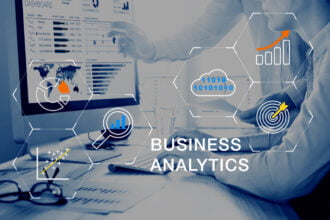What is Workforce Analysis?
What is Workforce Analysis?
Organizations can’t plan their human resource strategies unless they have the data required to arrive at conclusive decisions. Workforce analysis deals with employee-centric data to identify the current and future requirements for labor, skills, and competencies. This analytical model can be used to identify the gaps between demand and supply of human resources, thus allowing businesses to come up with proactive plans to reduce the gap. Supply analysis, demand analysis, and gap analysis are the three essential components of a comprehensive workforce analytics strategy.
Workforce analytics provides business owners with a complete picture of their existing human resources, along with the critical insights necessary to make future decisions that drive business success.
The Benefits of Workforce Analytics:
There’s a lot of buzz around workforce analytics in this era of big data. Why should business leaders care about implementing these solutions?
Business leaders need measurable insights about their workforce that can guide them in recruiting new resources and retaining the best existing talents to maximizing the productivity of their workforce. Workforce analytics can provide them the specification of desired skills and capabilities based on the existing, as well as future, human resource demand and supply. HR managers can then use those specifications to evaluate the potential recruitment challenges and identify the best means to retain employees with the desired skill-set and recruit new people according to the demand forecasts.
Let’s find out some of the key benefits that workforce analytics brings to the table for businesses of all sizes.
1. Predicting Attrition:
Losing your best talents to your competitor is never a good sign for any business. Workforce analytics can help you recognize the strengths and vulnerabilities of your workforce and predict attrition and vacancies. It can provide you with the finer details about the areas that are likely to experience wearing down due to the departure of key players. You can analyze various metrics to identify which functions, units, departments or locations are at the risk of experiencing attrition in the near future. By accurately predicting the risk of attrition in advance, you will be better prepared to model the scenario to minimize the potential losses.
2. Better Employee Retention:
If it is not already obvious from the first point, the insights obtained from workforce analytics can help you plan your employee retention strategy proactively. You will be in a better position to understand the causes of attrition and design appropriate controls to retain your top performers. It can also save you a significant amount of recruitment costs – both from the financial and productivity perspective.
3. Forecasting Productivity Risks:
Workforce analytics can help organizations identify workforce trends such as seasonal absences, resignation trends and average employment duration of its employees. Business leaders can also identify productivity bottlenecks and mitigate risks associated with the loss of critical resources or skills. With the ability to monitor productivity risks and bottlenecks, business leaders can devise appropriate contingency plans based on real-time insights.
4. Stronger Cohesion between Different Teams
When an organization implements workforce analytics solution, it makes different teams get involved with the decision-making process. It aligns all the departments, including but not limited to human resource, finance, sales, and operations, to work towards common objectives. Access to consolidated and actionable workforce data allows all the parties to communicate more efficiently and build collaborative relationships with each other – thus facilitating an evidence-based, data-driven decision-making process.
5. Strengthening of Organizational Values
It may not be immediately evident, but effective workforce analytics can result in stronger organizational values. For example, insights about employee development can help in improving the skills and competencies of your workforce – which can subsequently lead individual employees towards higher achievement and greater fulfillment at work. Similarly, business leaders can make use of insights to improve the employees’ level of motivation. They can also demonstrate that the organization is committed to transparency by sharing insights with their workforce.
Final Words:
To put it in a nutshell, workforce analytics enables data-driven decision-making, replacing the current model of making strategic decisions driven by intuition and guesswork – thus improving the efficiency and productivity of organizations to a significant extent. Implementing workforce analytics is a journey towards building a better workplace. Just set the ball in motion, you will be surprised and delighted to discover the strategic benefits that it brings to your business.






